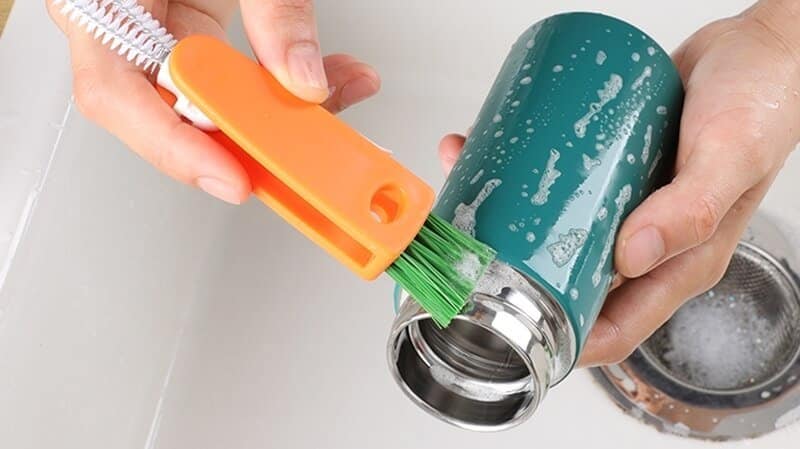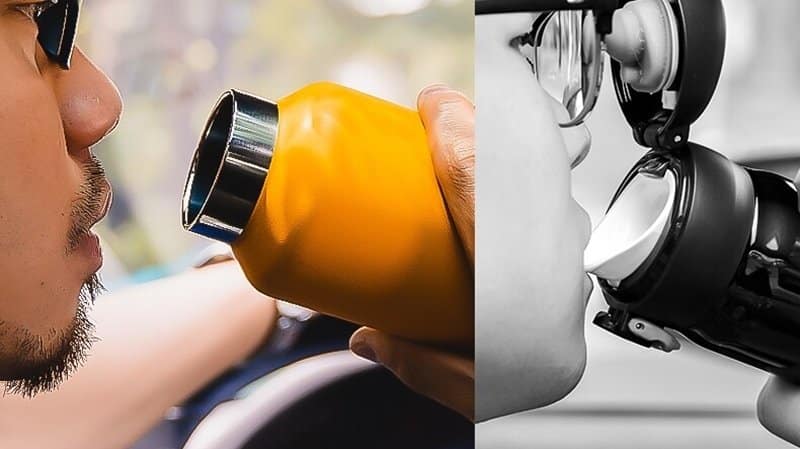Water Bottle Material: Which is Best for Water Bottle and Drinking?
Last Updated on March 11, 2024 by Tina ShaoThere are many different types and materials of water bottles, which can get confusing. Which is best?
The answer depends on what you want your water bottle to be used for. Some people track their daily hydration levels, while others use them for hydration first thing in the morning. We want a water bottle that’s easy to take with us wherever we go if you’re like us.
So, in this article, we will discuss which material is best for water bottles.
Stainless steel
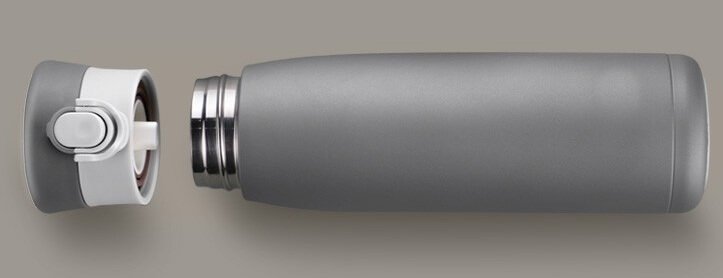
Stainless steel material is heavier than BPA-free plastic and more durable because it is less likely to get scratched or cracked if it falls on hard surfaces such as concrete floors or rocks (it happens to me!). They also don’t impart flavor to your drink, unlike with some plastics which could make your beverage taste funny when stored inside them for long periods.”
Pros
- Stainless steel water bottles are phthalate and BPA-free.
- They are known to be eco-friendly since they are 100% recyclable.
- They do not retain any smell and are easy to clean.
- They can be used for storing hot and cold beverages and liquids.
- They are portable because they are lightweight and can be allowed on any airline if empty.
- These bottles are presentable, fashionable, and trendy.
- They are easily branded and can be used for advertisements and marketing purposes.
- These bottles are corrosion-resistant and durable.
Cons
- The exterior part of the steel water bottles can peel or dent over time.
- After prolonged use, the external walls of steel water bottles can dent or peel due to dropping on hard surfaces.
- BPAs and other toxic chemical elements can leach into some stainless steel water bottles.
- These water bottles leach, allowing a metallic taste into the water.
- They require an energy-intensive design and manufacturing process.
- Since steel is a good conductor of heat, stainless steel water bottles can overheat the water when exposed to the sun.
- These bottles are not microwaveable.
- Stainless steel water bottles are more expensive than glass water bottles and glass water bottles.
GLASS
Glass water bottles are more durable than plastic ones. They won’t scratch or break easily, but they are not the best choice for outdoor activities because they might break when dropped on the ground. Glass doesn’t retain odors and flavors, so you c, can fill it with any liquid without worrying about getting an awful taste in your mouth after drinking out of them regularly.
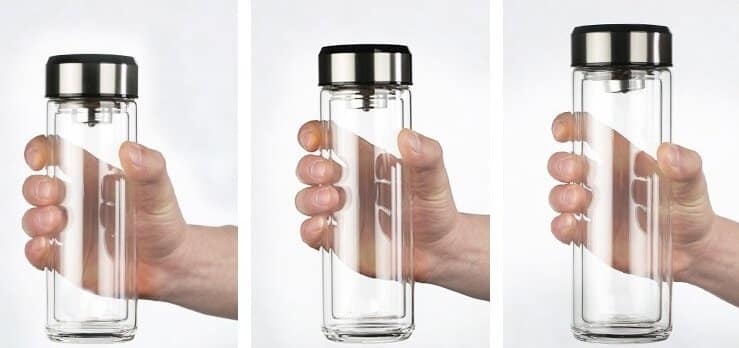
Pros
- Glass is BPA-free; BPA is an industrial chemical used to manufacture plastics and is harmful to the human body when it exceeds some quantities.
- Water in glass bottles tastes better because Glass is non-permeable and does not absorb color or odor.
- It is easier to clean, making it the most hygienic.
- In terms of aesthetics, Glass is stylish, sleek, and popular amongst all trendy artisans.
- Glass-like stainless is known to be recyclable, making it an eco-friendly material.
- Although Glass is expensive in the short term, it is cheap in the long run.
- Glass is a bad conductor of heat. It maintains the temperature of the water, be it cold or hot.
Cons
- They are susceptible to breaking if they drop on hard surfaces, making them very short shelf-life.
- The glass manufacturing process emits greenhouse gases into the environment, which causes global warming and climate change.
- Compared to plastic water bottles, glass bottles are heavy.
PLASTIC
Plastic is the most common material for water bottles. This material is cheap and lightweight. It has a good impact on resistance and flexibility. Plastic bottles are easy to carry around, but they are not durable. Plastic can be scratched or broken easily.
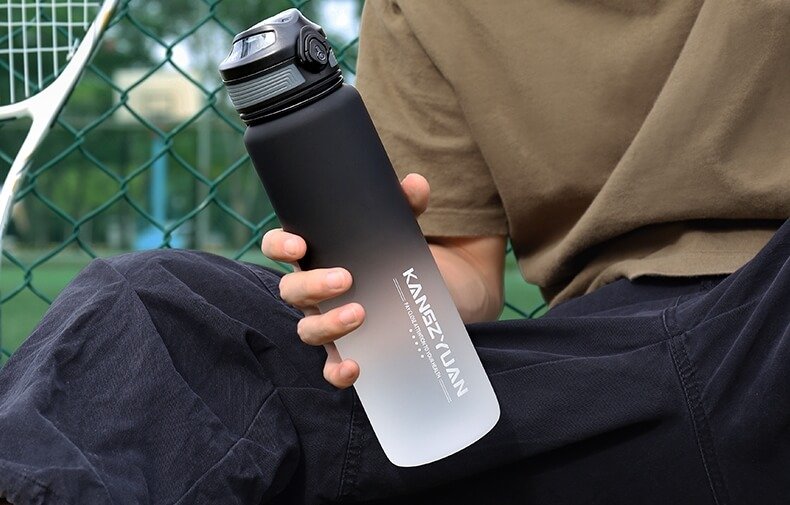
If you purchase a plastic water bottle, make sure it’s BPA-free because plastic might release harmful chemicals into your drink if exposed to heat (such as in a car) or if the bottle is old and worn out.
Pros
- They are easily portable, making them convenient to be carried around.
- They are not susceptible to breakage like the glass water bottles
- Plastic is recyclable; although it is recyclable, not all plastic is collected to be recycled.
Cons
- Plastic bottles are harmful to the environment because they are non-biodegradable, and it takes years before they can entirely be eliminated from the environment.
- The manufacturing process of plastic bottles requires the use of crude oil. During the manufacturing process, greenhouse gases are emitted into the environment. These gases cause global warming that degenerates into climate change.
- Some plastic water bottles are made of BPA; BPA is a harmful chemical element to the human body when consumed in some quantities because it causes cancer and organ failure.
- Plastic management requires a high budget because plastic is widely used in many households; therefore, recycling all the plastic disposed of is impossible.
BPA-Free Plastic
Most plastic water bottles on the market are made from BPA-free plastic. It is usually lightweight, flexible, and low-cost.
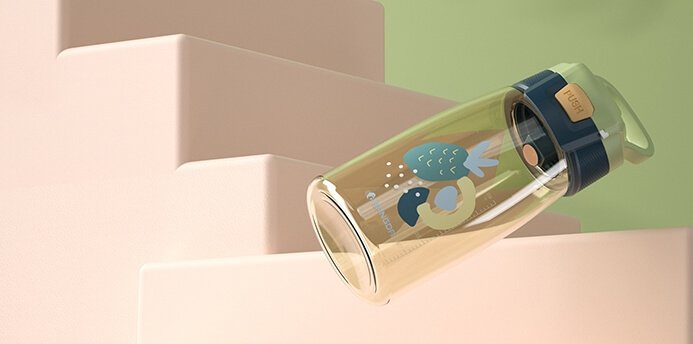
But, it might have a distinctive odor when you first use it. This can be due to chemicals used in manufacturing and will disappear after multiple washing items.
In addition, plastic is not as durable as metal and glass bottles, so it may get scratched easily or crack if you drop it on a hard surface like a concrete floor or rocks. You should avoid putting hot liquid into a plastic water bottle because it can cause chemical leaching or melting of the bottle.
Disposable water bottle material
A disposable water bottle is made from a thin material and used only once. These are made from polyethylene terephthalate (PET) or high-density polyethylene (HDPE). PET bottles have a recycling code 1, consisting of one type of plastic.
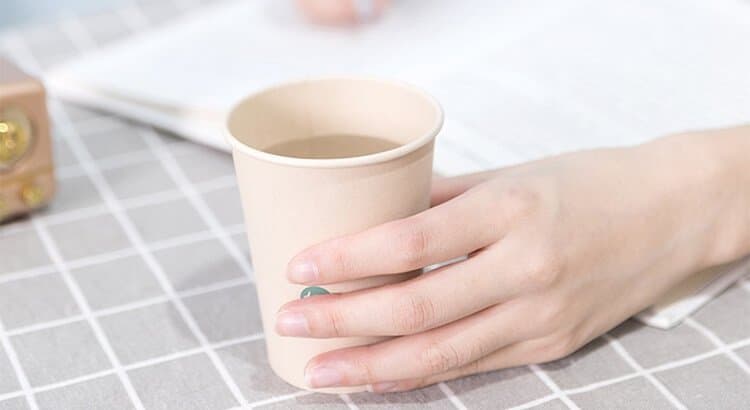
The most common food-grade plastic, HDPE, is the stiff plastic used to make milk jugs, detergents, and oil bottles.
Although this material is lightweight and easy to recycle in some areas, it can harm the environment if not correctly disposed of.
Aluminum Water Bottles
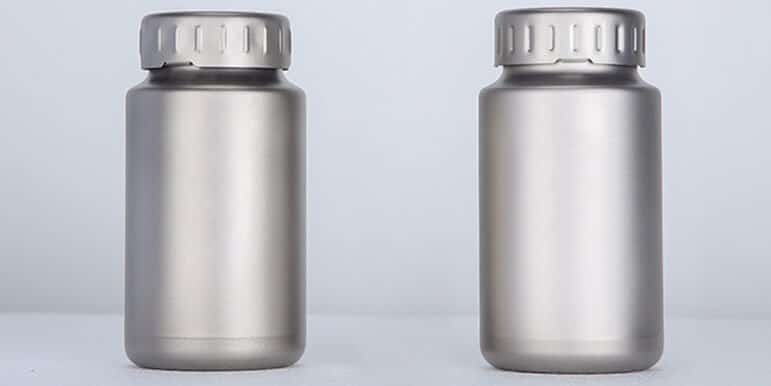
Aluminum water bottles are lightweight and robust, so they tend to last longer than other types of sports bottles (like plastic ones), which makes them perfect for those who want to cut down on waste by using a reusable bottle over time instead of throwing it away after one use or one summer season. You might even find that an aluminum bottle will last for years!
Tritan copolyester water bottle
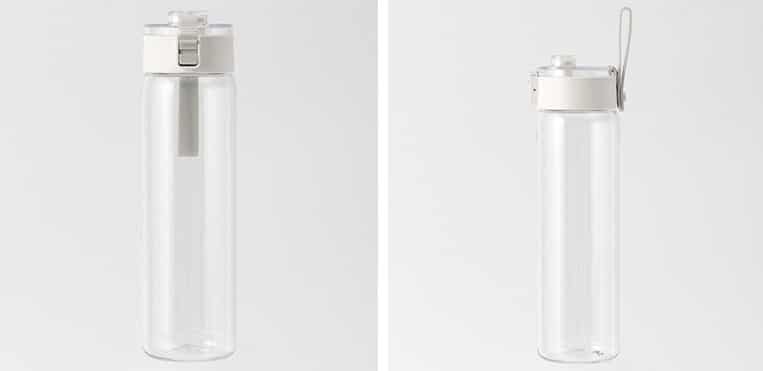
This material is BPA-free, durable, and impact-resistant. It has the same easy-to-clean features as those made of Glass and shatter-resistance. Tritan water bottles are resistant to stains and odors. They often come in various colors, shapes, and sizes. And they last long – if you don’t drop them off at a high place or something like that!
What Material Is Best for A Water Bottle?
When shopping for a water bottle, knowing what materials to look for and which ones to avoid is essential. The best water bottles are Glass, stainless steel, and BPA-free plastics like Tritan.
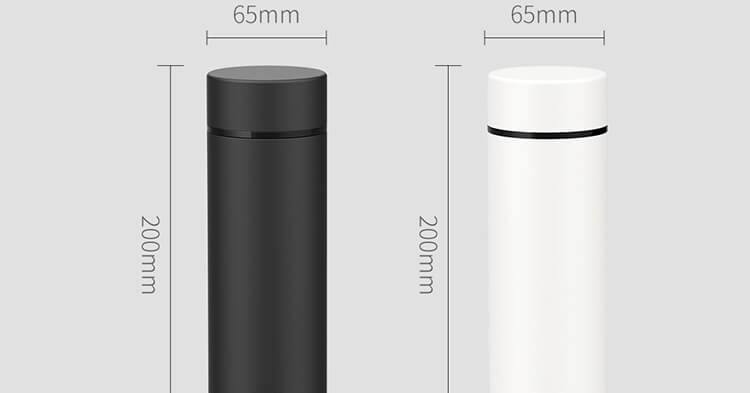
1. Stainless steel – Steel water bottles are durable and can keep your beverages cold for a long time (they work great for keeping drinks warm, too). Steel bottles also don’t have any chemicals or linings that could leach into your beverage. Ensure it’s food-grade stainless steel, such as 304 or 316.
2. Glass – Glass is easy to clean and won’t leach chemicals into your beverages, but it’s heavier than plastic or steel and more prone to breaking. Many people choose Glass over plastic because they want an option that doesn’t affect the taste of their beverage or want something dishwasher safe (plastic can melt in the dishwasher).
3, Aluminum – Aluminum water bottles aren’t as standard as plastic or steel because aluminum isn’t as good at insulating temperature as other materials — though aluminum handles temperature changes well, so your beverage won’t be affected by a hot day or cold night. According to many studies, aluminum has a shallow risk of leaching chemicals into your water, making it safer than plastic water bottles.
What Is The Healthiest Material For A Water Bottle?
When considering the healthiest material for a water bottle, your best options are Glass or stainless steel. A stainless steel water bottle is a safe and reliable option if you want to avoid plastic but don’t mind the weight of metal.
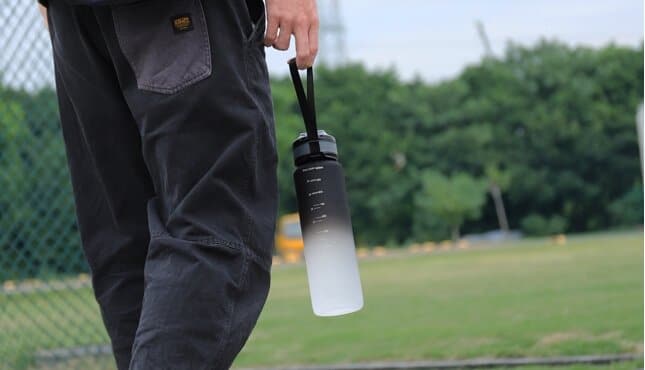
However, Glass is preferable to stainless steel if you want to maximize your health by eliminating all traces of harmful chemicals. A glass water bottle is also reusable and environmentally friendly.
A common concern when buying any reusable container is whether the materials it’s made from will leach toxins into their food or drink, especially if they’re trying to eat healthy foods or lead a healthier life.
Unfortunately, many plastics contain harmful chemicals that can leak into your food and drinks as you use them, making plastic containers dangerous for anything meant to be ingested—including water bottles!
Luckily, there are some excellent alternatives to plastic bottles today: Glass and stainless steel are free of these nasty chemicals found in plastic bottles. Glass and stainless steel will replace your old plastic bottles well! The only question now is: which one do I choose?
Is Stainless Steel Better Than Glass?
Stainless steel is a great option if you’re looking for an endlessly reusable, durable water bottle. These bottles are 100% recyclable and can be reused repeatedly, making them a sustainable choice. They won’t scratch or wear out quickly—they only need to avoid falling from exceptionally high heights.
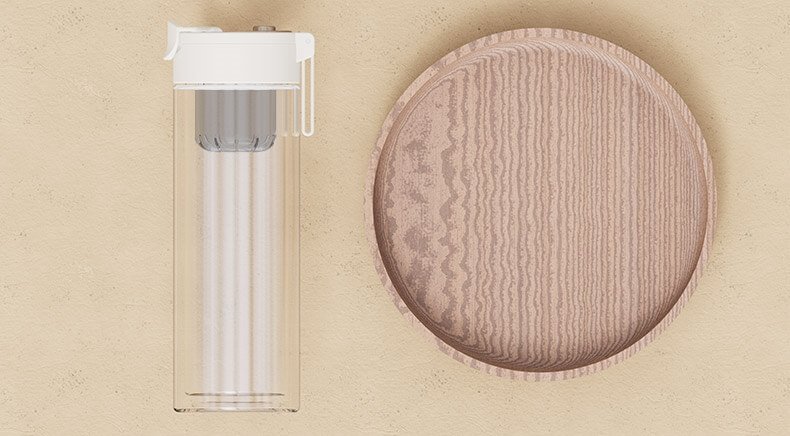
If exposed to hot liquids, stainless steel water bottles won’t shape-shift or melt. And because they’re not see-through like many glass water bottles, they won’t leach chemicals into your water if left in the sun—which means stainless steel won’t absorb the flavor of whatever’s inside.
But stainless steel is not better than Glass, and here are breakdowns for the justification:
- Glass water bottles don’t leach chemicals, but stainless steel bottles do leach chemicals into the water they carry. Insulated stainless steel water bottles often have their inner walls made of plastic, known to come from BPA and BPS, making them susceptible to leaching.
- Although many stainless steel water bottles are labeled BPA-free, this synthetic compound is sometimes replaced by BPS or BPF, which are equally harmful if they leach into the water.
- Water from glass bottles tastes better than that from stainless steel bottles. Metallic water bottles tend to have odor and smell when used for an extended period. Glass doesn’t retain any smell or odor even after long use; hence, it retains the flavor of the water.
- Glass bottles are more eco-friendly than stainless steel. The factories involved carbon, sulfur, and ash during the stainless steel manufacturing. Carbon is a greenhouse gas that devastates the environment because it causes global warming, degenerating into climate change.
- Although stainless steel is 100% recyclable, getting enough material to recycle takes time. This means that stainless steel water bottles must be continuously produced. Glass material is 100% recyclable and has an unlimited shelf-life. Glass can be melted and recycled endlessly to make new water bottle products without compromising the quality.


